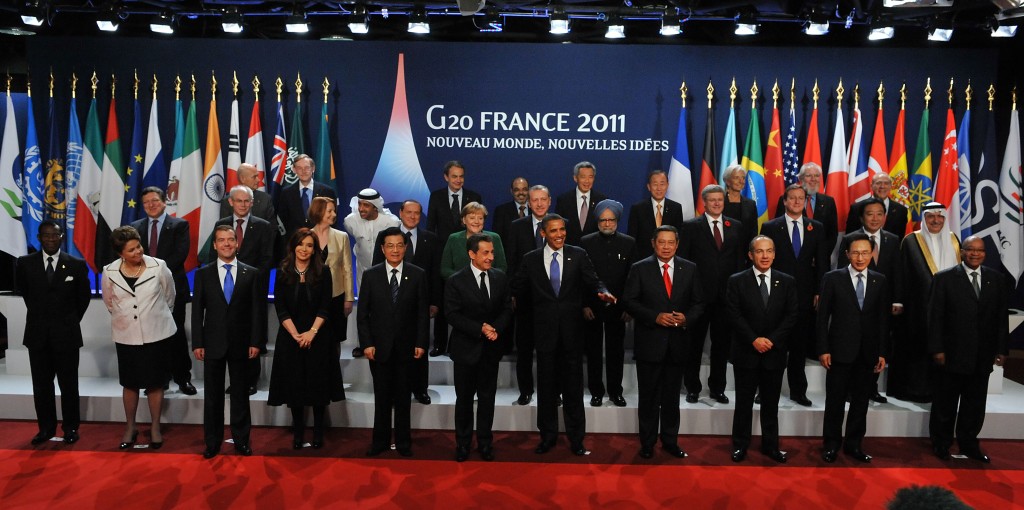 So my colleague and friend Stewart Patrick, the Director of the International Institutions and Global Governance Program at the Council on Foreign Relations has given us a full picture of the contemporary global governance system recently in Foreign Affairs.
So my colleague and friend Stewart Patrick, the Director of the International Institutions and Global Governance Program at the Council on Foreign Relations has given us a full picture of the contemporary global governance system recently in Foreign Affairs.
But say it ain’t so Stewart. The bottom line for him is an unruly and largely unorganized global governance architecture delivering only partially what is needed:
The future will see not the renovation or the construction of a glistening new international architecture but rather the continued spread of an unattractive but adaptable multilateral sprawl that delivers a partial measure of international cooperation through a welter of informal arrangements and piecemeal approaches.
And Stewart doesn’t see this ‘global governance muddle’ changing:
But regardless of what one thinks of the current global disorder, it is clearly here to stay, and so the challenge is to make it work as well as possible.
Is this really how global governance looks; and is? Well yes, sorta of if you have in your head a certain image of global governance that looks like some form of domestic government – but at an international level. Now Stewart is clear in fact that global governance is not world government. And he notes the contrast between domestic government – “formal, hierarchical institutions with the authority to establish and enforce binding rules,” and global governance – “more complex and ambiguous.” So what he sees is at the international level is badly malformed governance where, as he says, “international politics remain anarchic, with the system composed of independent sovereign units that recognize no higher authority.”
And acknowledging that “anarchy”, leads me to remember a conclusion expressed by another friend and colleague, UCLA’s Arthur Stein. As Arthur argued a few years back in an edited book by this blogger, “Can the World Be Governed: Possibilities for Effective Multilateralism”:
International institutions, in contrast, do not have at their disposal comparable bases of power [to domestic government]. In international politics, no higher-level authority has the tools to engineer the behavior of governments in ways that governments can shape the behavior of their citizens. The decisions of international organizations reflect the interests of their constituent governments, and enforcement depends on them as well. … International organizations thus arise and are fashioned to serve the interests of states. Global governance and the design of of institutions depend on incentives and on constructing arrangements that are compatible with such incentives.
Thus global governance, or what I frequently refer to as global summitry, neither looks like, nor acts like, domestic government. The analogy, I am afraid my dear friends, is inapt. And global governance evolution is equally unlike domestic government or domestic institutions. And then closer to contemporary reality Stewart acknowledges that the contemporary era is not global governance without multilateralism but with its astonishing diversity. The landscape is filled with formal and informal institutions, ad hoc bodies, regional entities as well as UN specialized agencies.
And thus while diplomats and officials attempted to create a centerpiece – a kind of deeply flawed government, that reality is long inadequate in describing global governance today. Still to Stewart the “centerpiece of contemporary global governance remains the UN, and the core of the UN system remains the Security Council – a standing committee including the most powerful countries in the world. “
But it really doesn’t act as the centerpiece and hasn’t for the longest time. There was the cold war that largely froze the Security Council and now there is a Security Council with many of the wrong states, as Stewart calls them, “the old guard”, as central players. But the travails of the Security Council have long been sidestepped by the “Rise of the Informals” – first the emergence of the G7 in the mid-1970s and then the rise of the G20 Leaders Summit called into action by the looming global financial crisis. Furthermore many of the formal institutions have been tasked by the informals to help govern. The G20 Leaders have, for one, created a giant iceberg of institutions, committees and standard organizations seeking to advance policy in financial reform, agriculture and elsewhere.
There is no need to benchmark the current system against some hypothetical order of institutions – which doesn’t exist and may never. I suppose global governance today is “global governance in pieces,” as Stewart describes it. But that is not the big point. Instead what is required is an assessment of the policy achievements and identify the gaps between what is required and what has been achieved. The structure no matter how messy it looks does not require us to accept “good enough governance,” as suggested by Stewart. It certainly does not require us to reflect back on a time when the architecture was neat and clean – and kinda of looked like world governance. It was a fantasy then; and it is now.
Image Credit: en.wikipedia.org

